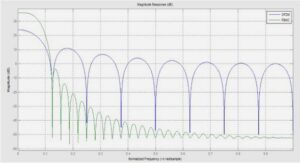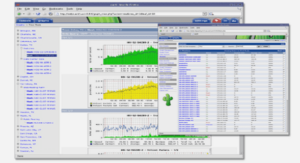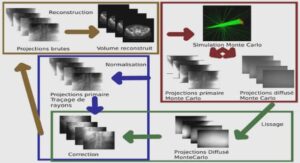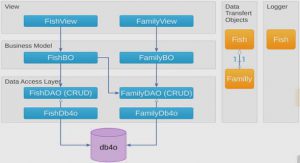The first objective of this project was to set up a bench test in order to recreate the complete flight conditions the battery would encounter in an aircraft. The second objective is the analysis of the performance of a nickel-cadmium (Ni-Cad) battery compared to a lithium-ion (Li-Ion) battery. Both types of battery are utilized to start the auxiliary power unit (APU) of an airplane. Both types underwent tests at variable temperatures to observe their potential to meet the industrial customer’s requirements under such conditions. By developing more reliable batteries, improvements can be made to the safety of both aircraft and electrical vehicles. The results of this paper aim to aid the industrial customer when making strategic decisions with battery choice.
Many industries, especially the aerospace industry, are currently interested in replacing aging Ni-Cad battery technology with the more recent, lighter Li-Ion technology. As Li-Ion batteries have a higher energy density compared to Ni-Cad, the overall weight of the aircraft can be reduced.
The Li-Ion batteries are equipped with a battery management system (BMS), which allows the display of the state of charge (SOC) in real time. Contrastingly, SOC of a Ni-Cad battery is not readily available in real time. The BMS also protects the cells, prevents thermal runaway, and measures the voltage, current and temperature. Because the BMS allows greater control of energy storage, Li-Ion batteries are a major interest to the aerospace industry and are currently being tested for in-flight use. The tests ensured that the battery can be used in dynamic, onboard operations in addition to stationary operations.
For use in flight, a battery must be able to deliver high currents, up to 800A, over a short period of time at temperatures between -40°C and +70°C. Extreme temperatures have the greatest impact on aircraft battery performance. Insufficient SOC has the second-greatest impact. Both of these factors contribute to the chance of starting the APU; if a battery cannot start the APU within three attempts, the aircraft will be barred from take-off. The tests in this report are designed to examine the operating range and limits of Li-Ion and Ni-Cad batteries and determine if they meet these criteria. The batteries have been tested in the following order: First the Li Ion S1, then the Li-Ion S2, followed by the Ni-Cd and to finish the Li-Ion S2N
This report focuses on the Ni-Cd and Li-Ion batteries. A battery is a device that converts chemical energy into electric energy. A battery is composed of several cells. These cells can be connected in series to increase the voltage or in parallel to increase the capacity (Ah). The cells can also be connected in serial/parallel to achieve a specific voltage and current. The capacity of a battery is expressed in ampere-hour (Ah) and it represents the available energy of the battery. The charge and discharge current of a battery are measured in C-rate, e.g. for a 50Ah battery, 1C rate corresponds to 50A.
SOC
The state of charge (SOC) represents the remaining energy available in the battery, expressed in percentage. When the SOC is at 100% the battery is fully charged and at 0% the battery is empty. The depth of discharge (DOD) represents the percentage of the battery capacity that has been discharged compared to the maximum capacity.
BMS
The Li-Ion has the advantage of having a battery management system (BMS) compared to the Ni-Cd. The BMS controls the charge and discharge, optimize the performance, enhance safety and provide live data on the battery condition. The voltage of each individual cell in the battery is continuously monitored, allowing the cell to be balanced. A short-circuit protection device is embedded in the battery, to avoid any damage to the cells. The internal temperature is controlled, if the battery go over or below a threshold, the charge current will be limited or the battery will activate the protection mode by disconnecting itself. The SOC of the battery can be calculated and displayed in real time.
Factors affecting battery performance
Discharge rate
When there is a high discharge current, the battery voltage can drop extremely low. Therefore, the battery can be disconnected even if there is still energy inside it, because the voltage goes under the minimum threshold of the battery (cutoff voltage). Once the load is removed from the battery, the voltage slightly increase after a resting period. The capacity of the battery decreases with increasing discharge current. The service life of the battery is reduced when discharged at high current. Moreover, discharging at high rates may heat up the battery above the surrounding temperature.
Temperature
The temperature is one of the key factor affecting the battery performance. The temperature has a direct impact on the energy that the battery is able to deliver. Lowering of the discharge temperature will result in a reduction of capacity, therefore the battery will reach the cutoff voltage faster. At low temperatures, there is a reduction in chemical activity and an increase of the battery internal resistance. At high temperatures, the performance is reduced due to self-discharge or chemical deterioration. Furthermore, high temperatures accelerate the aging of the cells.
Aging and service life
There are two types of aging for a battery. The aging of the battery corresponds to a loss in energy storage capability. The first one, is related to the length of storage period, calendar life. When the battery is stored for a long time with no activity, the following parameters are affecting the battery life: the self-discharge, the temperature variations and the electrochemical system. The second one, is influenced directly by the number of cycle charge/discharge performed by the battery. The service life of the battery is specified in number of cycles. Batteries have a predetermined number of cycles before the overall capacity drops, in other words, the charge retention is reduced. Every cycle slowly reduces the battery life expectancy .
Design
The hardware used for the design of the battery will directly influence the battery performance. It will impact the thermal exchange, size and weight of the battery. These components are, for example, container material, spacing between the cells, electrical circuits, insulation and protection devices.
INTRODUCTION |




